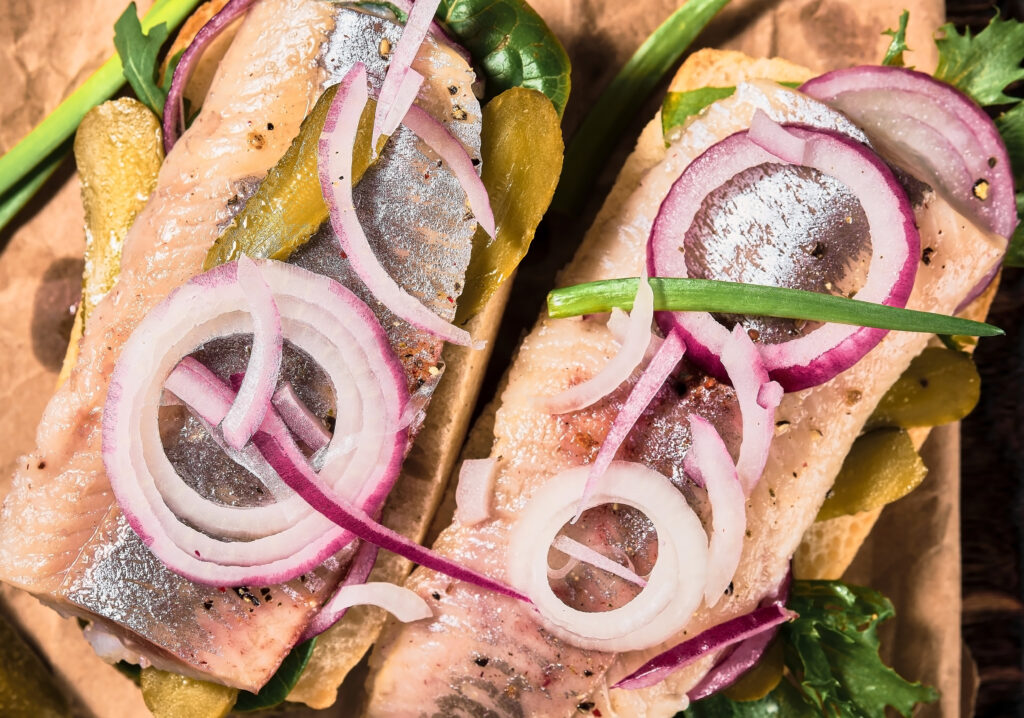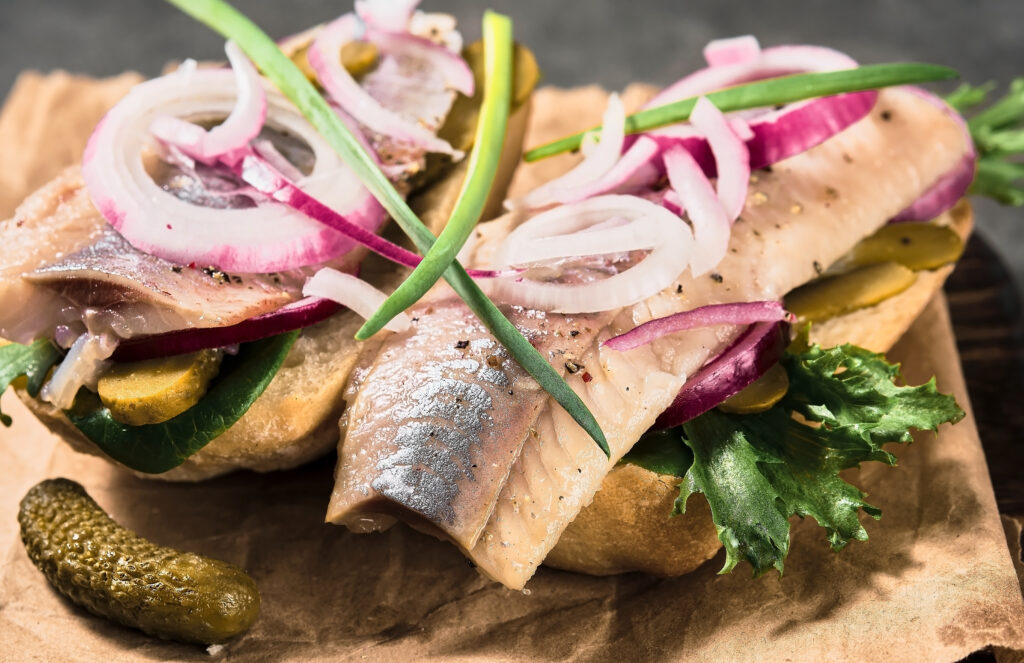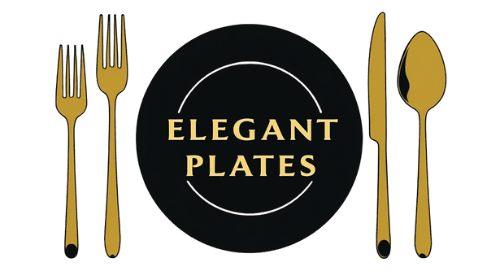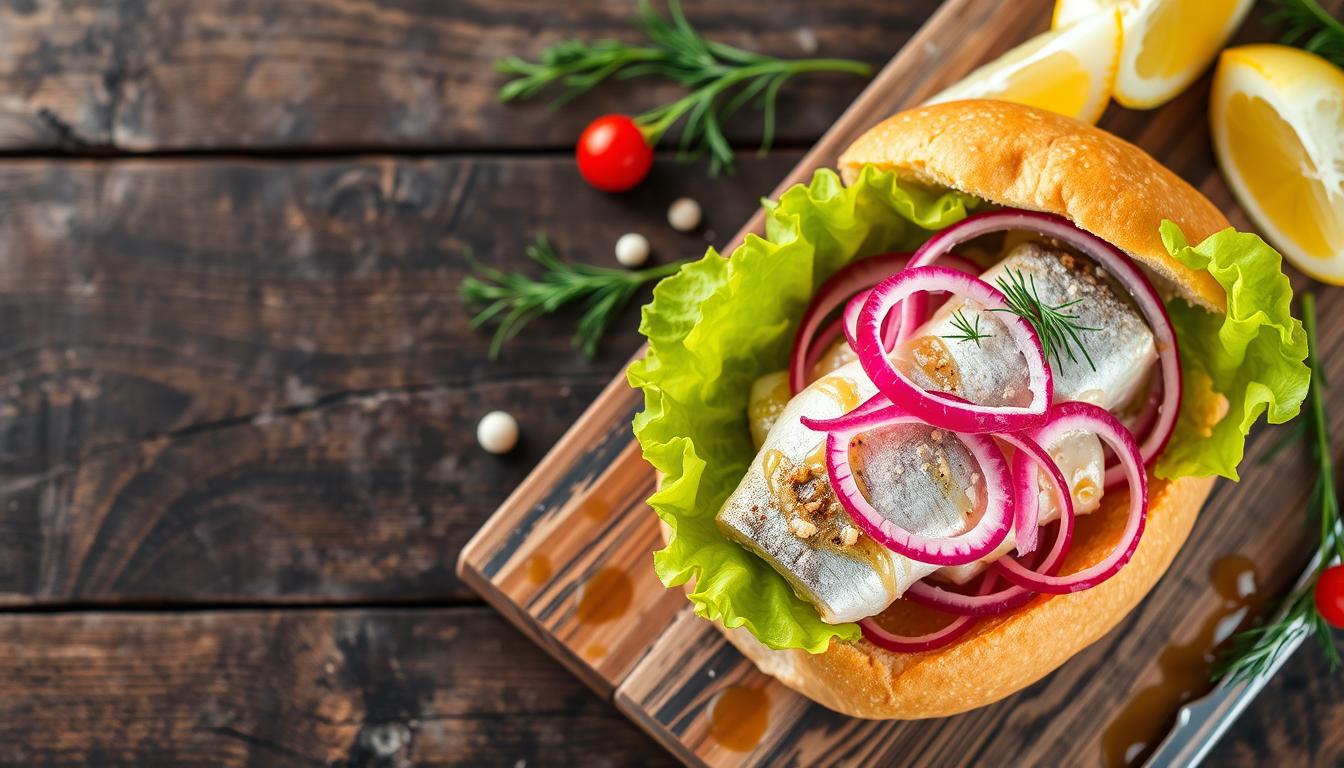As summer fades, the smell of fresh bread and sea air fills Northern Germany’s streets. Matjesbrötchen, a Dutch-style fish sandwich, is all the rage. This recipe lets you bring North Sea fishing traditions into your kitchen.
Matjesbrötchen is a favorite that mixes pickled herring’s tang, warm bread, and rich toppings. It takes you to the Netherlands’ busy harbors and quaint seaside towns. There, this sandwich is a treasured part of local culture.
Table of Contents
Introduction to Traditional Dutch Fish Sandwiches
Exploring the Netherlands and Northern Germany’s rich food history, we find the story of matjes herring and the Dutch herring sandwich, or matjesbrötchen. This tasty treat is loved by locals and visitors, showing the area’s strong tie to the North Sea and its seafood.
The Cultural Significance of Matjes Herring
Matjes herring is a treasured food in the Netherlands and coastal areas. It’s caught when the fish are at their best, then cured in a secret mix of spices and vinegar. This makes the fish tender and flavorful, a key part of German maritime cuisine.
History of North Sea Herring Fishing
The North Sea has been crucial for coastal towns in the Netherlands and Northern Germany for ages. Herring fishing has shaped their economies and food traditions. The herring harvest was a big celebration, with fishermen bringing their catch to be enjoyed by everyone.
Why Matjesbrötchen Became Popular
The matjesbrötchen sandwich was a favorite among fishermen and locals. It combined the tasty matjes herring with soft bread, creating a delicious mix of flavors and textures. It became a symbol of local culture and a must-try for visitors.
What Makes Matjes Herring Special
Matjes herring is the main ingredient in the famous Matjesbrötchen sandwich. These young, tender herrings are caught right before they spawn for the first time. This ensures they have the best flavor and texture.
The traditional Dutch pickling method is key. It gently cures the herring, boosting its natural flavors without overwhelming them. This results in a delicate, slightly salty taste that’s great for sandwiches.
Matjes herring stands out because of its high quality and special processing. The fish are picked at the right time, before they mature, to keep their mild flavor. This traditional curing method, passed down through generations, gives matjes herring its unique taste and texture.
| Attribute | Matjes Herring | Regular Herring |
|---|---|---|
| Harvest Time | Before first spawn | After first spawn |
| Flavor | Mild, slightly sweet | Stronger, more oily |
| Texture | Tender, delicate | Firmer, more robust |
| Curing Process | Gentle, enhances natural flavors | More aggressive, can overpower flavors |
The special qualities of matjes herring make it a favorite in Dutch Matjesbrötchen sandwiches. Its delicate, slightly salty taste goes well with raw onions, pickled gherkins, and crusty bread rolls.
Essential Ingredients for Matjesbrötchen Recipe
To make a real Matjesbrötchen, you need top-notch ingredients. The heart of the recipe is the matjes herring fillets. These are herring caught before they’re sexually mature. They’re mild, tender, and full of flavor.
Selecting the Perfect Matjes Fillets
Matjes herring is the main ingredient in Matjesbrötchen. It’s cured in a special way, giving it a unique taste and texture. Choose fillets that are bright and firm but still soft. They should taste lightly salty and not too fishy.
Choosing the Right Bread Roll
The bread roll is crucial for the Matjesbrötchen. Go for a fresh, crusty sourdough roll. It needs to hold up to the strong flavors of the pickled herring. The sourdough’s chewy texture and tang go great with the matjes filling.
Traditional Accompaniments and Garnishes
- Diced red onions, providing a zesty crunch
- Pickled gherkins or cornichons, lending a tangy and crunchy contrast
- A dollop of sour cream or remoulade sauce, adding a creamy element
- Fresh dill or parsley, for a touch of herbal freshness
These toppings and garnishes make the Matjesbrötchen even better. They add a mix of flavors and textures that make every bite special.
Making a real Matjesbrötchen takes care and the right ingredients. From picking the best matjes fillets to choosing the right bread and toppings, it’s all about quality. By using the best ingredients and traditional methods, you’ll make a Dutch-style fish sandwich that’s truly delicious.
Preparing the Perfect Sourdough Bread Roll
To make the ultimate Matjesbrötchen, start with a sourdough bread roll. This tangy, crusty base is perfect with the bold flavors of pickled herring. If you’re up for it, making your own sourdough starter can add depth to the bread’s taste.
When making sourdough bread rolls, use some of your active starter discard. This adds the sour notes that go great with Matjes herring. You should get a roll that’s sturdy yet soft, holding up to the fillings without getting soggy.
Getting the right texture and rise is crucial. Proper kneading, proofing, and baking techniques are key for a crusty outside and airy inside. The bread should be chewy but not dense or heavy.

With a homemade sourdough bread roll, you’re on your way to a perfect Matjesbrötchen. The tangy, complex bread flavors will match the briny, sweet notes of the pickled herring. This makes for a delightful and authentic Dutch-style fish sandwich.
The Art of Pickling Herring
In Dutch cuisine, pickling herring is a cherished tradition. It adds a special flavor and texture to the matjes herring. This method, passed down through generations, is key to making the perfect Dutch herring sandwich.
Traditional Dutch Pickling Methods
The Dutch method uses salt, sugar, and spices to pickle herring. This mix preserves the fish and gives it a rich flavor. The curing time is 3 to 5 days, allowing the flavors to blend well.
Seasoning and Curing Times
The curing time is important for the pickled herring‘s taste and texture. The herring soaks up the brine, becoming tender and flavorful. A shorter time makes the herring firmer, while a longer time makes it softer.
Storage Tips for Pickled Herring
Keeping the pickled herring fresh is crucial. Store it in the brine in the fridge, making sure it’s always covered. It’s best eaten within a few weeks for the best taste and texture.
Pickling herring is a vital part of Dutch cooking. The matjes herring is a main ingredient in the famous Dutch herring sandwich. By learning the traditional methods, you can enjoy the delicious taste of pickled herring at home.
Matjesbrötchen Recipe
Start a journey through Northern Germany’s coastal flavors with the matjesbrötchen recipe. This sandwich is a treasure of the region’s sea-loving traditions.
To make the perfect matjesbrötchen, you’ll need a few things. You’ll need fresh sourdough rolls, matjes herring fillets, onions, pickles, and sour cream. These ingredients mix to create a delicious mix of tastes and textures.
- Begin by picking a crusty sourdough roll and cutting it in half.
- Place 2-3 matjes herring fillets on the bottom half. These are the main attraction.
- Add a lot of finely diced onions on top of the herring. They add crunch and a strong smell.
- Then, put chopped pickles on the onions. They bring a tangy contrast to the herring.
- Finally, add a dollop of sour cream. It brings a creamy, cool touch to the sandwich.
To add freshness and color, sprinkle some fresh dill or chives on top. You can also add a boiled egg slice or thin apple slices for more texture and taste.
Enjoy your matjesbrötchen right away for the best taste. This Dutch herring sandwich is a favorite that highlights Northern Germany’s coastal food heritage. It’s a mix of salty, tangy, and creamy flavors in every bite.

Assembling Your Dutch-Style Fish Sandwich
Making the perfect Matjesbrötchen, a Dutch-style fish sandwich, starts with careful assembly. Begin by lightly buttering the inside of your bread roll. This keeps the sandwich from getting soggy as the flavors mix.
Then, place the Matjes herring fillets evenly on the bottom half of the roll. Add diced onions on top, letting their sharp flavor mix with the pickled herring’s sweetness.
- Put a few slices of dill pickles on the onions for a nice crunch and a bit of acidity.
- Top with a spoonful of sour cream or tangy remoulade sauce. This ensures every bite is full of flavor.
Finish with a sprinkle of fresh dill or parsley. This adds a fresh, herbaceous touch that brings the sandwich together. The secret to a great Matjesbrötchen is layering these ingredients thoughtfully.
The art of making a Matjesbrötchen is finding the perfect balance of flavors and textures. By following these steps, you can enjoy the authentic taste of the Netherlands in your own kitchen.
Regional Variations and Modern Twists
The classic Matjesbrötchen recipe is a favorite in German maritime cuisine. But, different regions in Northern Europe have their own twists. Some use smoked herring instead of pickled matjes fillets. Others add unique local ingredients to make it their own.
Looking for a modern spin on Matjesbrötchen? Try adding avocado, capers, or a spicy sauce. These changes keep the dish fresh while respecting its heritage.
The Matjesbrötchen remains a favorite in Northern Europe. It’s loved for its versatility and rich taste. Whether you stick to the traditional recipe or try something new, it’s sure to please your palate.
FAQ
What is Matjesbrötchen?
Matjesbrötchen is a Dutch-style fish sandwich. It combines pickled herring, fresh bread, and savory toppings. It’s loved in Northern Europe, especially in coastal areas of the Netherlands and Germany.
What makes Matjes herring special?
Matjes herring is young and tender. It’s caught just before spawning for the best flavor and texture. The Dutch pickling method enhances its natural taste, making it slightly salty.
What are the key ingredients for an authentic Matjesbrötchen?
For a real Matjesbrötchen, you need high-quality matjes herring, fresh sourdough bread, and toppings like onions, pickles, and sour cream. Each ingredient must be top-notch for the perfect taste and texture.
Why is a sourdough bread roll important for Matjesbrötchen?
A good sourdough bread roll is key for Matjesbrötchen. Its tangy flavor goes well with the pickled herring. Making your own with starter discard can add extra flavor. The roll should be sturdy to hold the fillings without getting soggy.
How do you properly pickle and store herring for Matjesbrötchen?
Dutch pickling for herring uses a mix of salt, sugar, and spices. The curing takes 3-5 days. Store the pickled herring in brine in the fridge. It’s best consumed within a few weeks for the best taste and texture.
How do you assemble the perfect Matjesbrötchen?
Assembling the Matjesbrötchen is crucial. Start with butter on the bread to prevent it from getting soggy. Add the herring, onions, pickles, sour cream, and herbs. Each bite should have a good mix of flavors and textures.
Are there any regional variations or modern twists on the traditional Matjesbrötchen?
Yes, there are regional and modern variations of Matjesbrötchen. Some like smoked herring instead of pickled. Others add local ingredients or modern toppings like avocado and capers. These changes offer new flavors for those looking to try something different.


2 thoughts on “Delicious Matjesbrötchen Recipe: Dutch-Style Fish Sandwich”